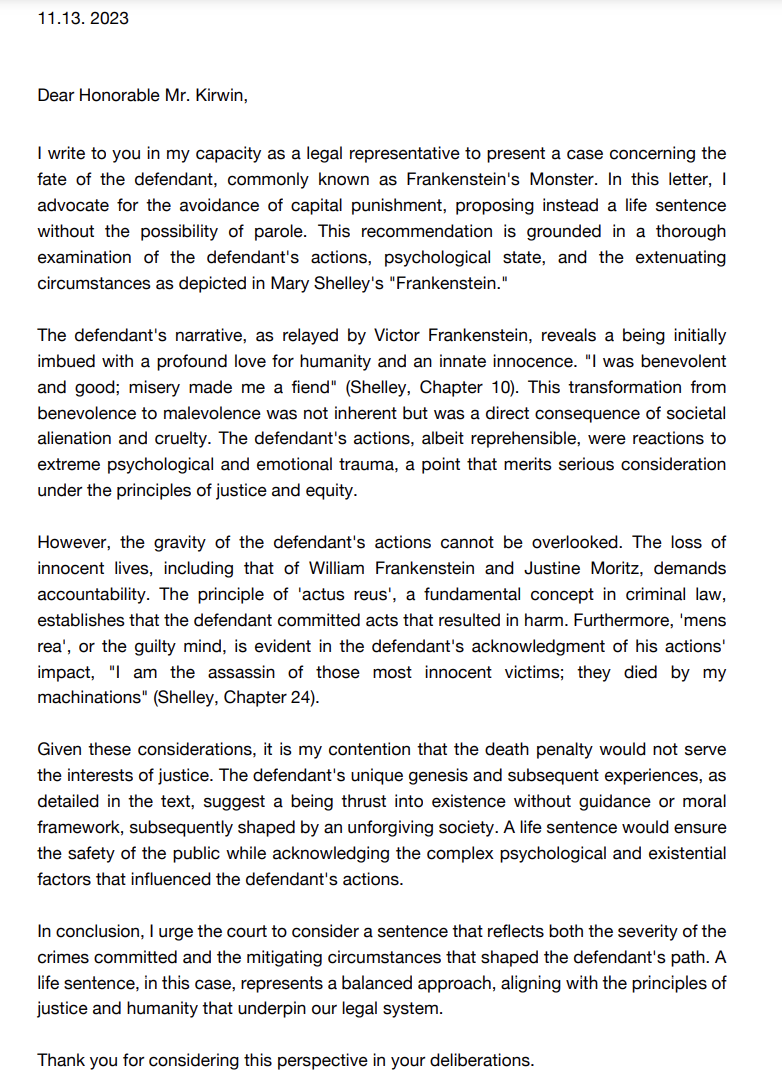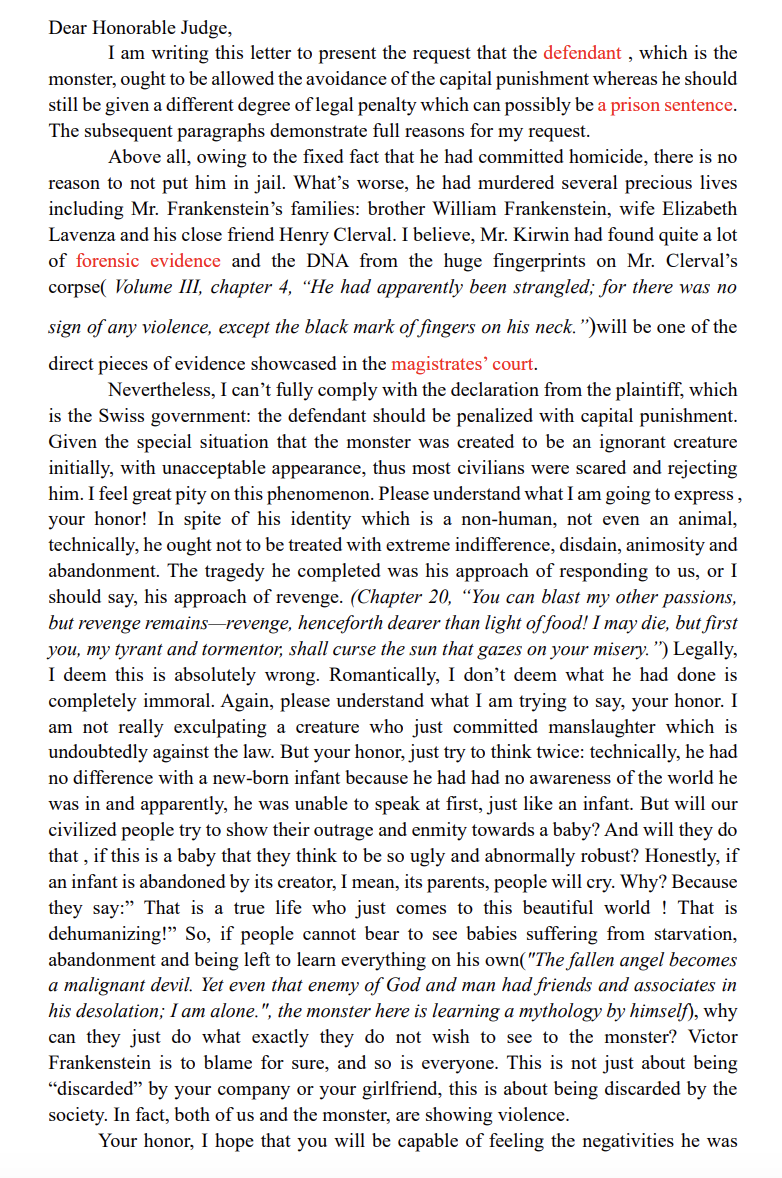Highlights of Teaching - ELA:Romanticism, Gothicism and Marry Shelly’s Frankenstein
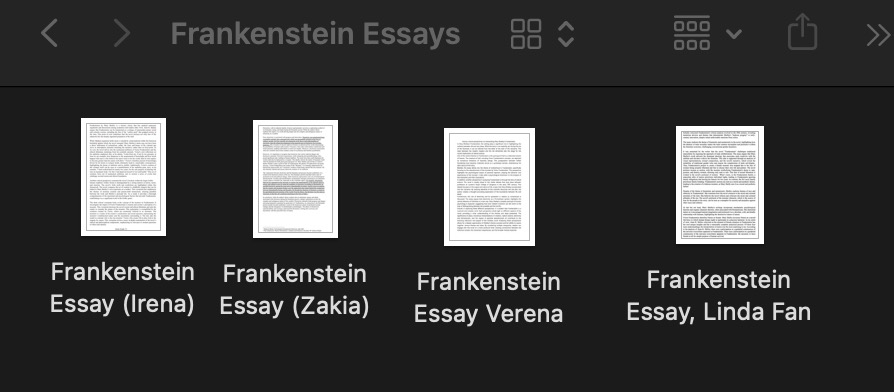
One of the memorable units covered in the grade 12 British Literature course was Romanticism and the Gothic. One assignment concerned an exploration of Marry Shelly’s 19th century novel ‘Frankenstein’ guided through a variety of critical perspectives—post-colonialism, psychoanalytic theory, new historicism, and formalism—each shedding light on different facets of Mary Shelley's masterpiece.
Post-Colonial Lens: Deconstructing Power Dynamics
Under the post-colonial lens, students ventured into the colonial implications embedded within Shelley's narrative. Through rigorous research and insightful discussions, they unearthed the parallels between Victor Frankenstein's relentless pursuit of scientific dominance and the colonial exploits of European powers. They dissected the Othering of the Creature, drawing parallels to colonial subjects stripped of their humanity and agency. This critical perspective illuminated the novel's underlying themes of exploitation, marginalization, and the consequences of unchecked power.
Psychoanalytic Exploration
Guided by Freudian theory, students delved into the depths of the human psyche, unraveling the psychological complexities woven into "Frankenstein." Through close analysis of characters' motivations and behaviors, they unearthed Victor's Oedipal desires and the Creature's existential angst. They explored the symbolism of the monster as a manifestation of Victor's repressed fears and desires, mirroring the internal conflicts inherent in the human condition.
Students assessed Victor's relentless pursuit of scientific knowledge and his subsequent rejection of his creation as a reflection of the imbalance between the rational intellect and the primal instincts, echoing Jung's concept of the individuation process and the integration of the shadow self. The Creature, in turn, certain students argued, embodies the archetype of the Other—the alienated and marginalized aspect of humanity—striving for recognition and acceptance in a world that rejects him.
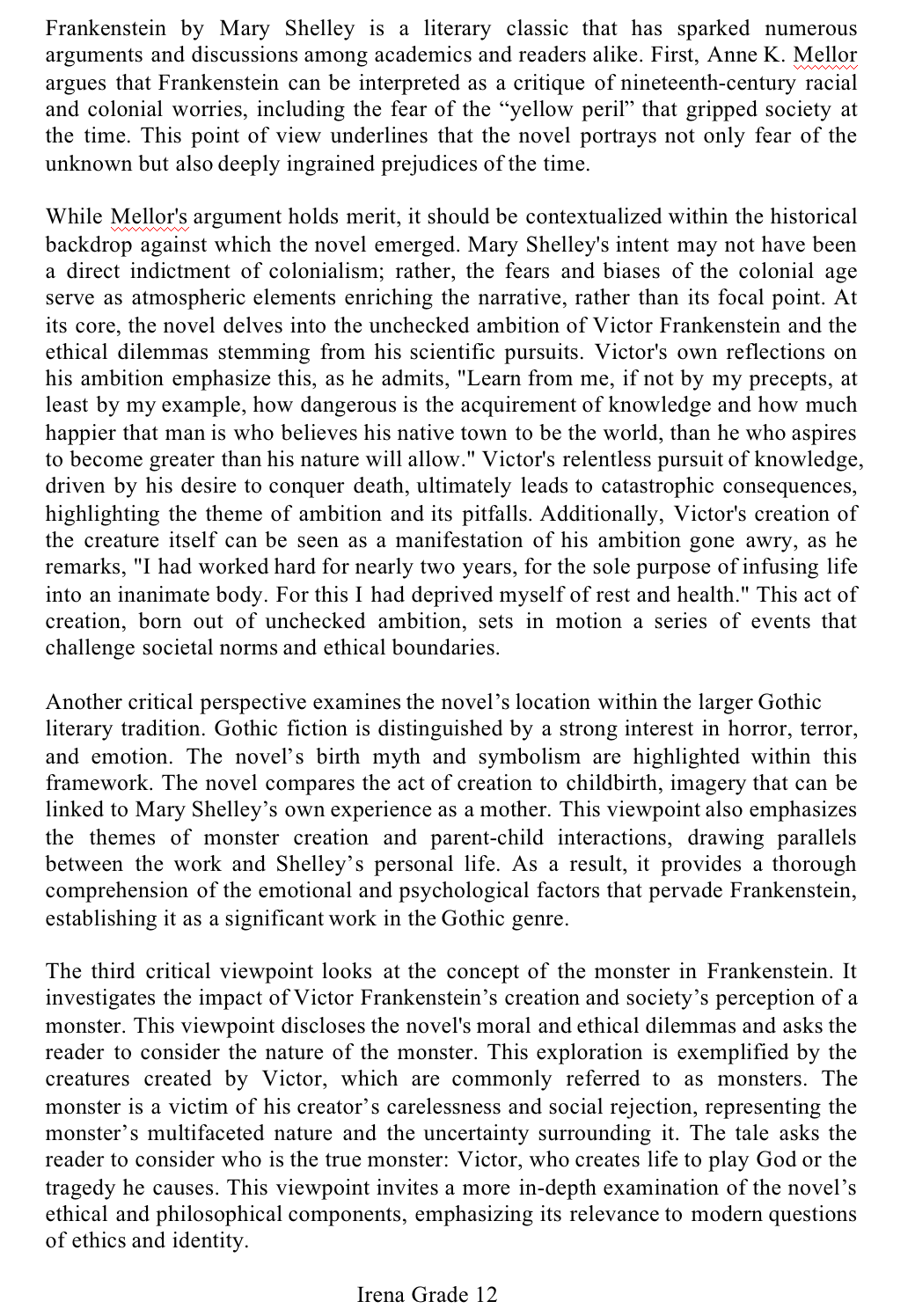
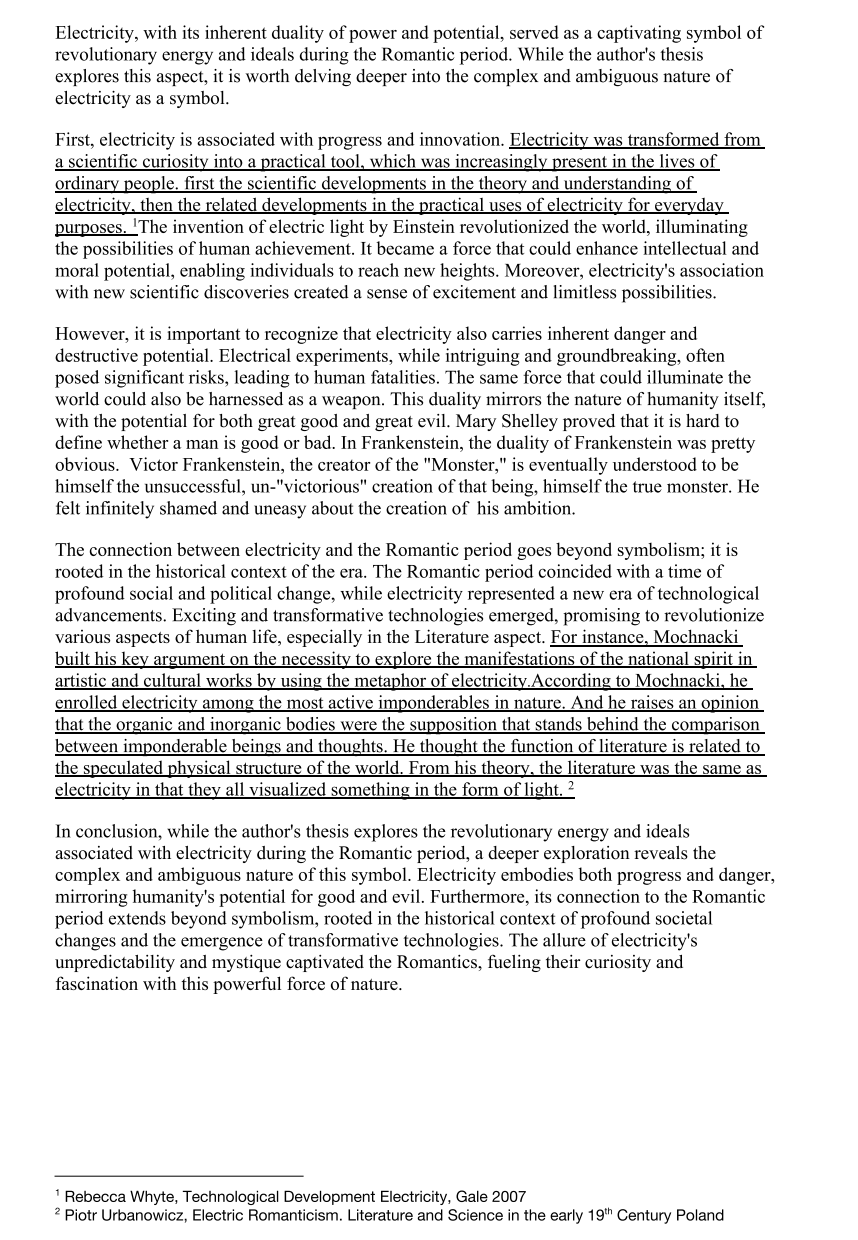
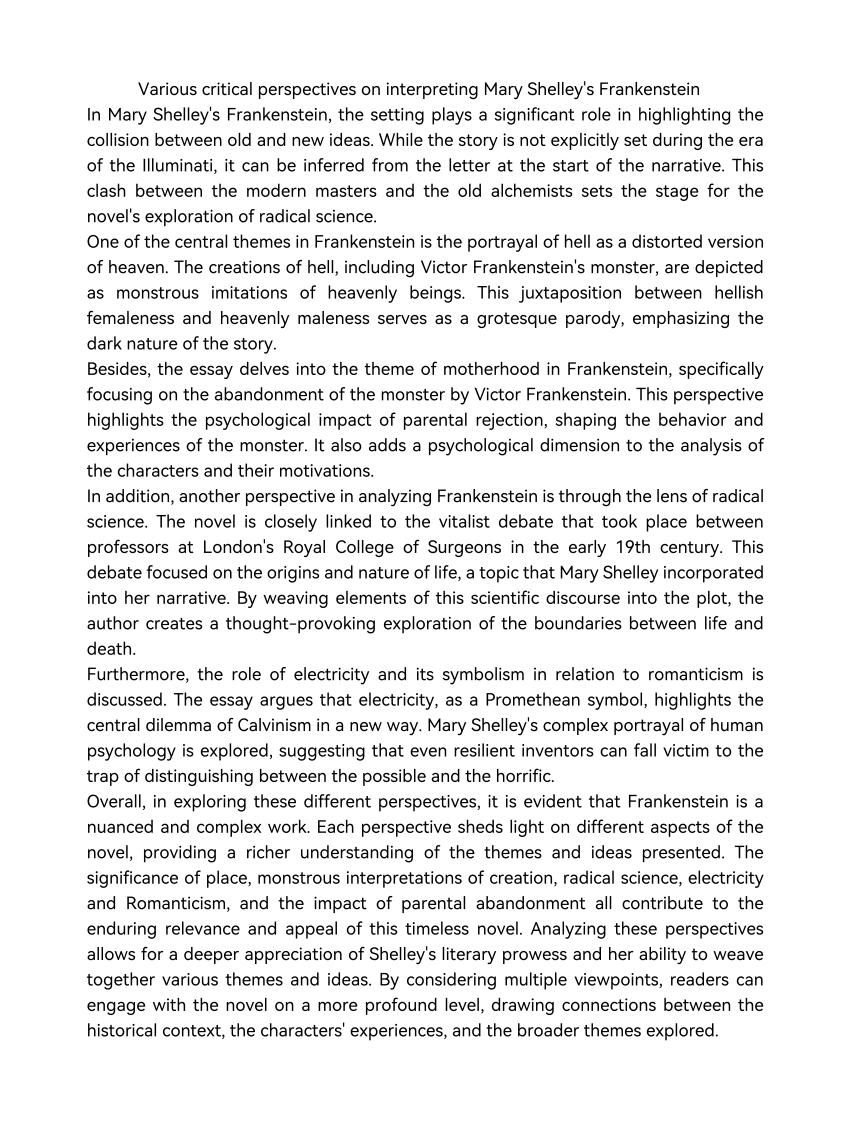
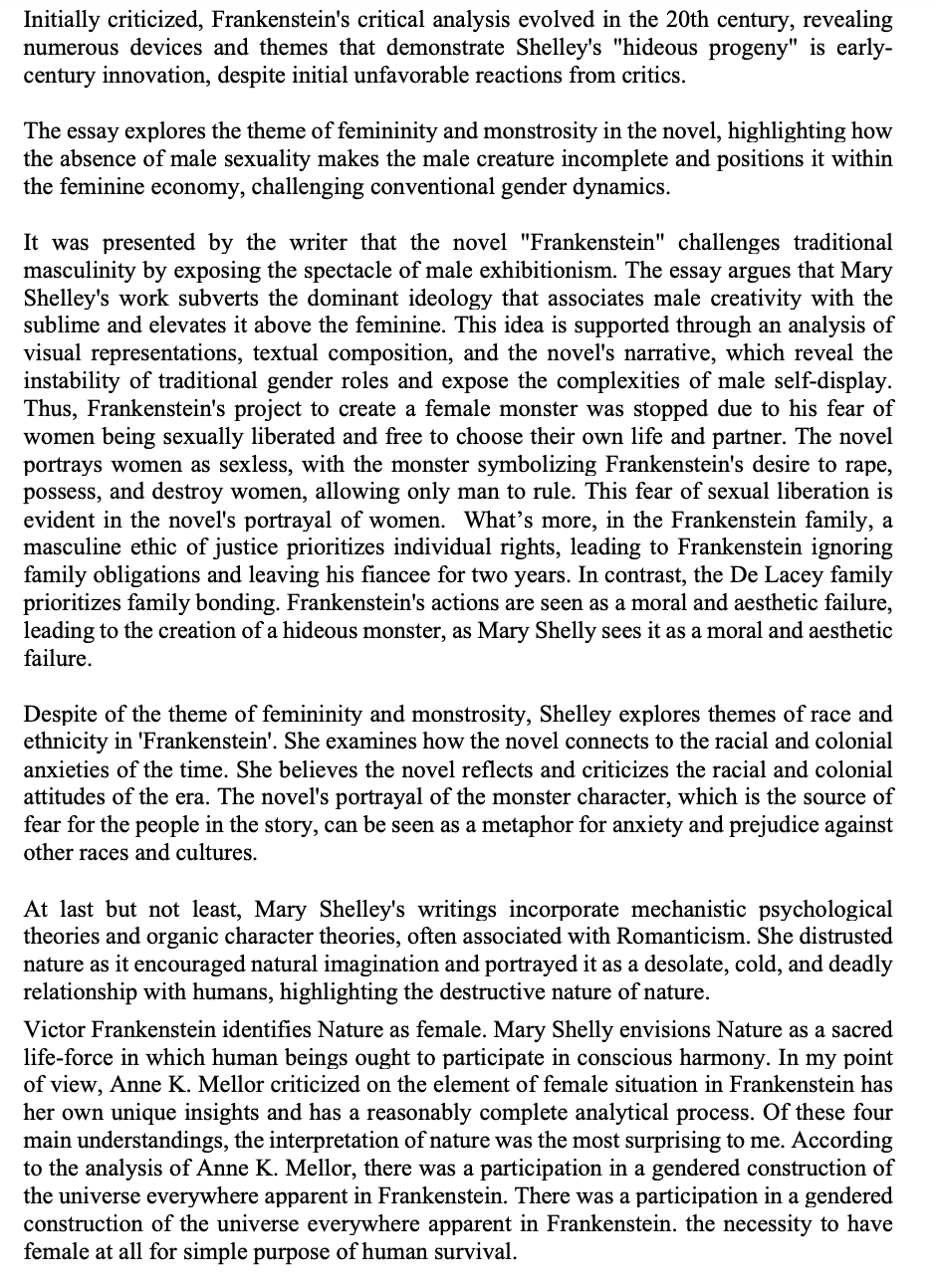
A Letter to a Judge Assignment
Following this students were tasked with assuming the roles of either the prosecutor or the plaintiff's defendant in a simulated legal case concerning the fate of the Monster from Mary Shelley's "Frankenstein." Drawing upon legal diction associated with both the British and American systems of justice, students meticulously crafted persuasive arguments to present before the judge. Student prosecutors argued for capital punishment, citing the heinous nature of the Monster's crimes and the need for justice to be served. The plaintiff's defendants countered with compelling arguments for acquittal or pardon, emphasizing mitigating factors such as the Monster's lack of agency and the role of Victor Frankenstein in his creation and subsequent abandonment. They appealed to the principles of mercy and rehabilitation, advocating for a second chance and the possibility of redemption. Through this exercise in legal advocacy, students gained a deeper understanding of the complexities of justice and the ethical dilemmas associated with the novels Byronic anti-hero.
